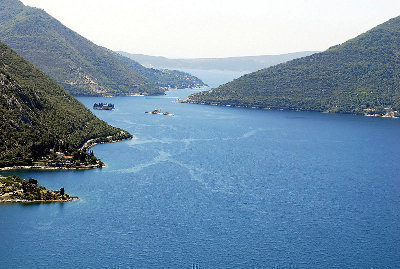Timing is very important when determining where to invest and live. If you invest too late, you miss the great deals and huge profits which accrue to early adopters. If you invest too early, you take on greater risk and your profit margins are eroded by the time value of money and by the overhead costs which are part of most investments.
Consider two extremes, Singapore and Cuba. The best time to invest in Singapore is decades past. Singapore real estate is ridiculously expensive, salaries for skilled workers are higher than anywhere else in the region, and growth has slowed to a level commensurate with Singapore’s status as an advanced and well-managed economy. Cuba, on the other hand, is a nightmare. Investors are being prevented from repatriating profits from their Cuban operations, businesses can be nationalized at any moment, the population is suffering from malnutrition and vitamin deficiencies, corruption is rampant, and the two aging brothers who run the nation like their own brothel are barely hanging onto life. No one really knows what will happen when the Castro brothers die — and unknowns are not good for investors. The best time to invest in Cuba is after those troubles are sorted out.
Montenegro achieved independence in 2006, in the midst of an incredible real estate boom. Many of the early investors earned significant profits, but others faced terrible losses when the boom cooled.
The boom didn’t cool only because of the global economic downturn. The boom also cooled because the first wave of investors discovered that Montenegro was in many ways not ready for massive inflows of foreign investment. Montenegro, at the time, suffered from pernicious corruption and even more from bureaucratic policies that had changed little since Tito’s time. The procedures for acquiring a land title or a building permit were so byzantine that bribery was the only effective means of getting business done.
The boom didn’t bust, however. Prices didn’t crash sharply, they only settled a bit and stopped rising for a time.
Fast Forward to 2011
Milo Đukanović, the controversial leader of Montenegro, stepped down in 2010 and was replaced by Igor Lukšić, an economist with a non-confrontational style and a mission to push Montenegro into EU and NATO membership.
The EU membership process provides an excellent framework for reducing corruption and large numbers of government bureaucrats have been arrested and charged with corruption in the last few years. At the same time, many of the bureaucratic processes have been streamlined or removed entirely. For example, the number of procedures required for receiving a construction permit was recently reduced from fourteen to two.
As a natural result of these improvements, stable economic growth is occurring. Agriculture, construction, retail, employment, and tourism all show positive numbers. Inflation and government borrowing are both under reasonable control.
The Montenegrin Lifestyle
The life of an expat investor in Montenegro is somewhat idyllic. Most business is conducted in relaxing café bars — many of which look out onto Kotor Bay or the Adriatic. The Mediterranean climate is nearly perfect, with just enough seasonality but few days at either extreme. The local people are friendly, but reserved. The environment is far cleaner than in most developing economies. You can water ski in the Summer and snow ski in the Winter — in a nation approximately the same size as Los Angeles County.
The Future
There is still significant progress to be made in Montenegro. For example, the process to register a car as a foreigner or for business use is terrible. There are many luxury facilities, but products from the United States and even Western Europe can be difficult to find. Shipping into the country is more difficult and expensive than it should be. Obtaining permanent residency is not the straightforward process it needs to be in order to attract expat investors and the economic citizenship project is still officially on hold.
However, progress is being made, at a steady pace. The government and economic situation in Montenegro improves every month — while the climate and atmosphere just keep being idyllic.
The Time to Act
Montenegro has been through it’s boom and bust cycle. It is experiencing steady economic growth and is very likely to see rapid but supportable growth over the next several decades. Now is the best time to invest, to make good deals at current rates before growth and speculation drive prices up.

